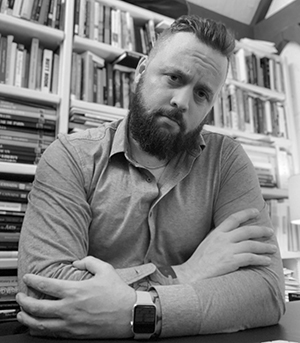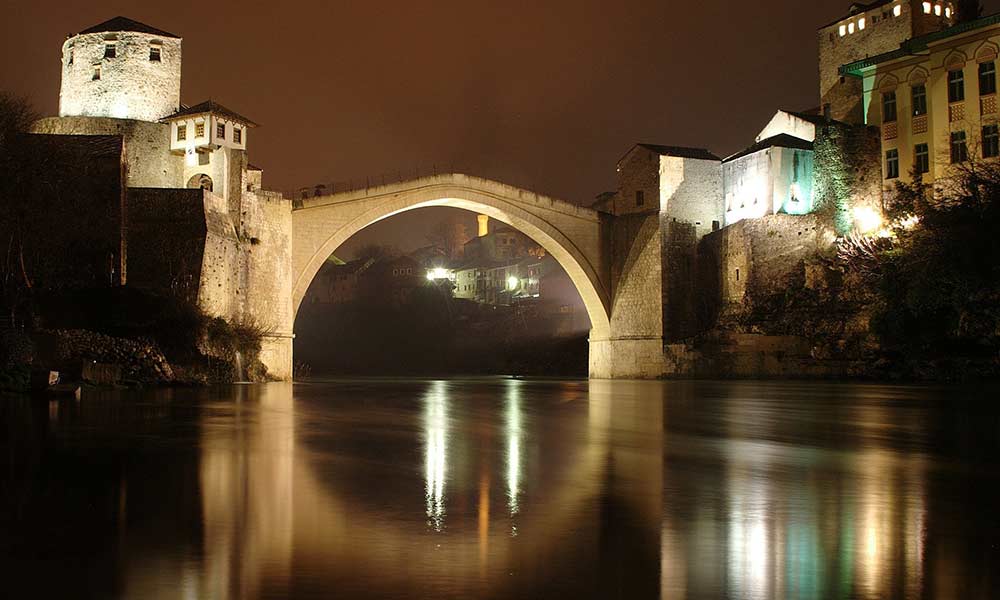Guggenheim fellow Peter Christensen explores an understudied shift affecting the way buildings are conceived, designed, and constructed.
People widely describe architecture as a meeting of science and art, says associate professor of art history Peter Christensen at the University of Rochester. But his latest project, still in the early phases of research, aims to look at that characterization in detail. He’s using the measure of patents and patentability in the history of architecture to tease apart the distinctions people have made between technology and art—and to see how architectural “authorship” has functioned.
The project has just earned Christensen a Guggenheim fellowship for the 2021–22 academic year, as well as a residency at the Institute for Advanced Study in Princeton, New Jersey, where he will be associated with the School of Historical Studies.

Peter Christensen
Associate professor of art and art history Peter Christensen has been awarded a Guggenheim fellowship for the 2021–22 academic year, as well as a residency at the Institute for Advanced Study in Princeton, New Jersey.
Guggenheim Fellowship
The John Simon Guggenheim Memorial Foundation established its fellowship program in 1925 to help provide fellows with time in which they can work with “as much creative freedom as possible.” There are two annual fellowship competitions, one for citizens and permanent residents of the US and Canada; the other, for citizens and permanent residents of Latin America and the Caribbean. The foundation receives approximately 3,000 applications each year and awards about 175 fellowships per year.
Institute for Advanced Study
Incorporated in 1930, the Institute for Advanced Study is an interdisciplinary institution that makes its home in Princeton, New Jersey. Dedicated to research, the institute does not teach students. In the years before World War II, it became a destination for European scholars seeking a home in the US. Among the institute’s illustrious faculty were Albert Einstein, Kurt Gödel, Hetty Goldman, and Clifford Geertz.
His book manuscript is tentatively titled “The Architectural Patent: Inventing Modernity” and spans the period from the English Patents Reform in 1852 to the World Intellectual Property Organization Copyright Treaty of 1996 to explore four phases of the relationship between patents and the pursuit of invention: definition, protection, commercialization, and democratization.
The term invention entered the architectural lexicon in the 19th century. “It’s entirely tied to the Industrial Revolution,” says Christensen. “You have the birth of the factory, the birth of mass production, and as a result, you have all of these issues come up with how architecture fits into that equation.”
An assembly line for houses?
Christensen’s curiosity about architecture and mass production was piqued when he was a curatorial assistant at the Museum of Modern Art in New York City. There he helped organize “Home Delivery: Fabricating the Modern Dwelling,” a major exhibition on prefabricated housing. “Architects like Frank Lloyd Wright and Buckminster Fuller, and even non-architects like Thomas Edison, were imagining throughout the 19th and 20th centuries ways to mass produce houses, in the way that cars are produced,” he says.
Architects have dabbled with mass production over the last 250 years, with some measure of success, but architectural mass production has never really become fully established. Patent culture—providing economic and cultural benefits based on exclusive intellectual property rights—has an uneasy relationship with the architectural world, Christensen contends. That’s because architecture is also rooted in the less tangible issues of formal expression and artistic influence
Nevertheless, with the Industrial Revolution the figure of the architect as the author of replicable and industrialized architecture brought the profession ever closer to what Christensen terms the “invention industry.”
He offers a general example: “The style of a building, in the technological sense that a patent is supposed to measure, is not an invention, even though we understand it to be an artistic invention. Flat roofs as opposed to pitched roofs is not an invention—unless there’s something about it which enhances the collection of water, for example, or the amount of daylight that the house gets.”
Christensen calls the “marriage” of architectural invention and intellectual property rights a “momentous and deeply understudied” change in 19th- and 20th-century architectural culture. Ultimately, he argues, that marriage fundamentally altered the ways in which buildings have been not only conceived but designed, engineered, constructed, and promoted.
Taking a ‘horizontal’ look at art history
“The Architectural Patent” will be Christensen’s third sole-authored book, following on Germany and the Ottoman Railways: Art, Empire, and Infrastructure (Yale University Press, 2017) and “Materialized: German Steel in Global Ecology” (currently in production at Penn State Press).
When the pandemic lifts and he can travel safely again, he plans to visit major European archives, including the European Patent Office in Munich, the National Archives in the UK and the National Archives in Paris, to carry out some of his research.
Christensen is excited that his newest work will take him in a new direction as a scholar. Rather than drilling down into a highly specialized topic, as he did in his first two books, Christensen sees his latest work, with his exploration of authorship as it pertains to architecture, as an opportunity to make a broader—or what he calls a more “horizontal”—contribution to the field of art history.



